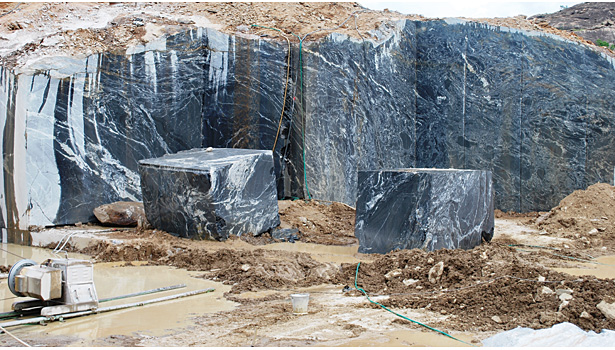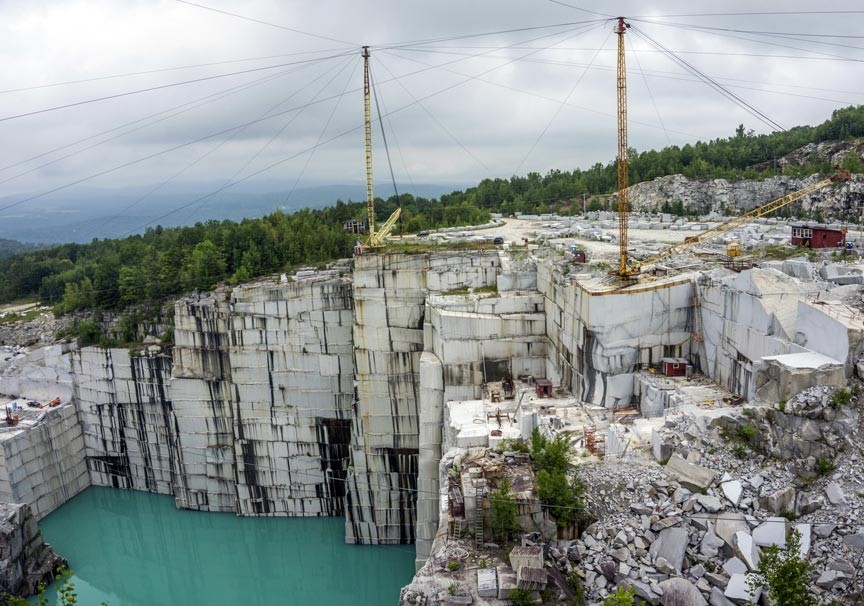Unearthing the Rich History and Lasting Practices of Granite Quarrying
As we base on the precipice of uncovering the complex tapestry of granite quarrying, a journey with time discloses not simply the physical act of drawing out rock but additionally the cultural and historical value woven into the really fabric of this method. From the old beginnings that laid the foundation for modern quarrying strategies to the lasting practices that are forming the future of this sector, each carve mark on granite surfaces informs a tale waiting to be unearthed (granite quarries in south africa). The tradition of granite quarrying stretches far beyond plain removal; it is a testament to human ingenuity, resilience, and the enduring appeal of this impressive stone
Old Beginnings of Granite Quarrying
Dating back to old civilizations, the practice of quarrying granite has actually been an indispensable part of human history and architectural innovation. The earliest proof of granite quarrying dates back to ancient Egypt, where enormous pyramids and complex sculptures were crafted from this sturdy stone. The Egyptians utilized primitive tools to draw out granite blocks from quarries, showcasing the value of this material in their huge building and constructions.
Moving on in background, the Greeks additionally made substantial payments to the quarrying of granite. The Greeks made use of granite in numerous architectural wonders, such as temples and statues, showing their ability in shaping and carving this sturdy stone. The Romans even more fine-tuned the methods of quarrying granite, using innovative devices like blades and hammers to essence and shape granite for their famous frameworks.
With the centuries, the method of quarrying granite has evolved, with modern innovations enhancing performance while keeping the ageless appeal of this natural rock - granite quarries in south africa. From old people to modern home builders, the tradition of granite quarrying remains to shape our globe
Evolution of Quarrying Techniques
The development of quarrying strategies has been noted by a continuous development in the direction of greater effectiveness and accuracy in extracting granite. Early quarrying techniques included manual labor with fundamental devices such as chisels, hammers, and wedges to draw out granite blocks from the planet.
In even more recent times, the arrival of machinery reinvented the quarrying market, allowing much faster extraction rates and raised efficiency. Technologies such as ruby cord saws, high-pressure water jets, and pneumatic drills have come to be basic in modern quarries, permitting for precise cutting and minimized waste. Developments in computer-controlled devices and 3D modeling have actually maximized quarrying procedures, leading to marginal environmental effect and enhanced sustainability methods. As the need for granite remains to climb, the development of quarrying pop over to this site strategies stays essential to conference market requires efficiently and sustainably.
Cultural Value of Granite
Granite holds an extensive social relevance throughout various civilizations due to its long-lasting existence in architectural masterpieces and admired monuments. From the stunning pyramids of Egypt to the complex carvings of the Angkor Wat holy place in Cambodia, granite has actually been a product of option for expressing grandeur and long life in social heritage. In ancient Rome, granite columns adorned holy places and public structures, symbolizing toughness and permanence. The cultural importance of granite extends beyond its physical qualities; it personifies resilience, security, and timelessness, making it a symbol of sustaining heritages and practices.

Lasting Practices in Quarrying
Among the abundant history of granite quarrying and its social relevance lies an expanding focus on lasting methods within the industry. As ecological awareness and concerns regarding source deficiency have enhanced internationally, the quarrying industry has actually progressively accepted sustainable approaches to lessen its influence on the setting and surrounding neighborhoods.

Furthermore, reclamation and rehabilitation of quarry websites post-extraction this article are indispensable to lasting practices. By restoring quarried areas to a natural or beneficial state, such as creating wild animals environments or entertainment rooms, quarriers can counter the ecological footprint of their operations and contribute favorably to the regional community.
Legacy of Granite Quarrying
With a historical background soaked in craftsmanship and industrial progress, what sustaining influence has granite quarrying left on the landscape of modern-day culture? The tradition of granite quarrying goes beyond mere removal practices; it has formed architectural wonders, city landscapes, and cultural heritage worldwide. The durable nature of granite has made it a preferred option for monoliths, structures, and link framework, standing as a testimony to the skill and artistry of quarry employees across generations.
Moreover, the economic footprint of granite quarrying can not be neglected. The industry proceeds to offer job opportunity and drive local economic climates in regions where granite removal is common. It has additionally spurred technical improvements in quarrying techniques and tools, causing much more efficient and sustainable techniques.
In regards to sustainability, the legacy of granite quarrying consists of efforts to reduce ecological influences through improvement tasks and accountable resource administration. By stabilizing financial interests with environmental stewardship, the market makes every effort to guarantee that future generations can remain to profit from this long-lasting natural deposit.
Final Thought
